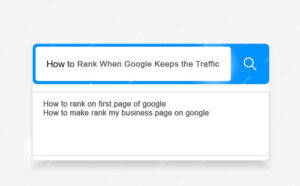1. Introduction to ‘Near Me’ Searches
In the digital age, the phrase “near me” has become a common search term. These searches are pivotal for businesses aiming to capture local customers. With the rise of mobile searches, optimizing for local SEO has never been more crucial.
2. Claiming Your Google My Business Listing
Claiming your Google My Business (GMB) listing is the first step in improving your local SEO. Ensure that all information, such as address, phone number, and business hours, is accurate. Adding high-quality photos and encouraging customer reviews can enhance your GMB profile, making it more appealing to potential customers.
3. Optimizing Your Website for Local Keywords
To rank for “near me” searches, incorporate local keywords into your website content. Use your city and neighborhood names in titles, meta descriptions, and throughout your content. Long-tail keywords like “best Italian restaurant in [City]” can also boost your local search rankings.
You would like to read: The Benefits Of Local SEO For Small Businesses
4. Creating Localized Content
Creating content that resonates with your local audience is essential. Blog about local events, news, and activities to position your business as a community leader. Showcasing your involvement in the community not only builds trust but also enhances your local SEO.
5. Consistency in NAP (Name, Address, Phone Number)
Consistency in your business’s name, address, and phone number (NAP) across all platforms is vital. Inconsistent information can confuse search engines and customers. Utilize tools like Moz Local or Yext to maintain NAP consistency across the web.
6. Using Schema Markup for Local SEO
Schema markup helps search engines understand your business details better. Implementing local business schema on your website can improve your chances of appearing in local search results. Schema markup can include your business name, address, phone number, and operating hours.
7. Encouraging Customer Reviews
Positive reviews can significantly impact your local search rankings. Encourage satisfied customers to leave reviews on your GMB listing and other review sites. Responding to reviews, both positive and negative, shows that you value customer feedback and are committed to providing excellent service.
8. Mobile Optimization
With 60% of “near me” searches happening on mobile devices, having a mobile-friendly website is essential. Ensure your website loads quickly, is easy to navigate, and provides a seamless user experience on mobile devices. Techniques like responsive design and accelerated mobile pages (AMP) can enhance your mobile optimization.
9. Building Local Backlinks
Building local backlinks can signal to search engines that your business is relevant to the area. Partner with local businesses for cross-promotion, or guest blog on local websites to gain high-quality backlinks. These local backlinks can improve your local search rankings and drive more traffic to your site.
10. Leveraging Social Media
Social media can play a significant role in your local SEO strategy. Share content related to local events, engage with the community, and use location tags in your posts. Active social media profiles can enhance your local SEO efforts and increase your visibility in “near me” searches.
You would like to read: The Impact Of Social Media Marketing On Brand Visibility
By implementing these strategies, businesses can effectively improve their local SEO and capture more traffic from “near me” searches. Start optimizing your local presence today to attract more local customers and grow your business.










